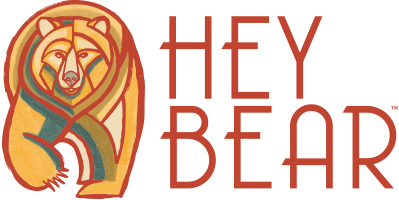Grizzly Bear Characteristics

Grizzly bears (Ursus arctos horribilis) have concave faces, a distinctive hump on their shoulders, and long claws about two to four inches long. Both the hump and the claws are traits associated with a grizzly bear’s exceptional digging ability. Grizzlies are often dark brown, but can vary from blonde to nearly black. The long guard hairs on their backs and shoulders frequently have white tips and give the bears a “grizzled” appearance, hence the name “grizzly.”
Grizzlies live in and use a variety of habitat types, playing important roles in each one. This makes them an “umbrella species,” meaning that when we protect them and their habitat we also protect many species. Grizzly bears can also help ecosystems by distributing seeds and nutrients through their scat, and perhaps regulating ungulate populations.
Diet
Grizzly bears are omnivores, and their diet can vary widely. They may eat seeds, berries, roots, grasses, fungi, deer, elk, fish, dead animals and insects. In the late summer and early fall, grizzlies enter hyperphagia, a period of 2 to 4 months when they try to take on more calorie-rich food to put on weight for winter denning. During this time period they can gain more than three pounds a day!
Did You Know? Grizzly bears use “rub trees.” These are trees where they scratch their backs, leaving scent and hair. Biologists can use these trees to collect DNA from many bears living in the area.
Population
Historically, there were around 50,000 grizzly bears in North America. Today, there are an estimated 1,800 grizzly bears remaining in five populations in the lower 48 states. Most of these bears are located in the Northern Continental Divide Population (including Glacier National Park) and the Yellowstone Population. Alaska is home to a healthy grizzly (sometimes called brown bear) population.
Habitat & Range
Grizzly bears are found many different habitats, from dense forests to subalpine meadows, open plains and arctic tundra. In North America, grizzly bears are found in parts of western Canada, Alaska, Wyoming, Montana, Idaho. There may be a very small population in the North Cascades of Washington states. Historically, grizzlies could be found from Alaska to Mexico and from California to Ohio.
Behavior
Grizzly bears are usually solitary animals. However, they may be seen feeding together where food is abundant, such as at salmon streams and whitebark pine sites. Females will rear their cubs for 2-3 years. When a female grizzly bear leaves her mother, she typically sets up her home range close to their mother’s home range. Male cubs will typically range further, but may also remain close by.
Did you know? The mating season for grizzlies is early May through mid-July, though fertilized eggs aren’t implanted in a female’s uterus until October or November.
Grizzly bears need to eat a lot in the summer and fall in order to build up sufficient fat reserves to survive the winter denning period. This is particularly true for pregnant females, who must have sufficient fat reserves to give birth to approximately one-pound cubs in January or February and then nurse them to about 20 pounds before emerging from the den in April or May.
Reproduction
Grizzly bears are one of the slowest reproducing land mammals. Females do not typically reproduce until they are four to six years old. Grizzly bears mate between May and July, but each female’s body delays implantation of the fertilized eggs into the uterus until October or November. If the female has not gained enough fat over the summer to survive and raise cubs, implantation may not occur. A grizzly’s ability to garner enough calories through the summer is not just crucial for her survival, but also for her ability to give birth to cubs. At best, a female gives birth to one, two or three cubs every 3 years, and the average.
Did you know? Grizzlies usually give birth to 1 to 4 cubs, but the average litter size is 2 to 3.
Mother bears keep their cubs with them for two to three years. Males do not help with rearing the cubs. Females are often very defensive about their cubs, especially when they are very young. Mothers tend to avoid other grizzlies and people while rearing their cubs.
Did you know? Both the size and the age that female grizzly bears give birth depends upon whether they’ve been able to find adequate nutrition.
In the Greater Yellowstone Ecosystem, cub survival declined from 64% during 1983-2001 to 55% in the most current period (2002-2011). With current cub mortality at about 45%, many cubs do not survive even their first year. With additional mortality in their second year as yearlings, about 30% of newborn cubs survive to reach the age of independence (usually at 2 years of age, but sometimes at 3 years of age). Once they reach independence, however, the mortality rate is really low at about 5%.



